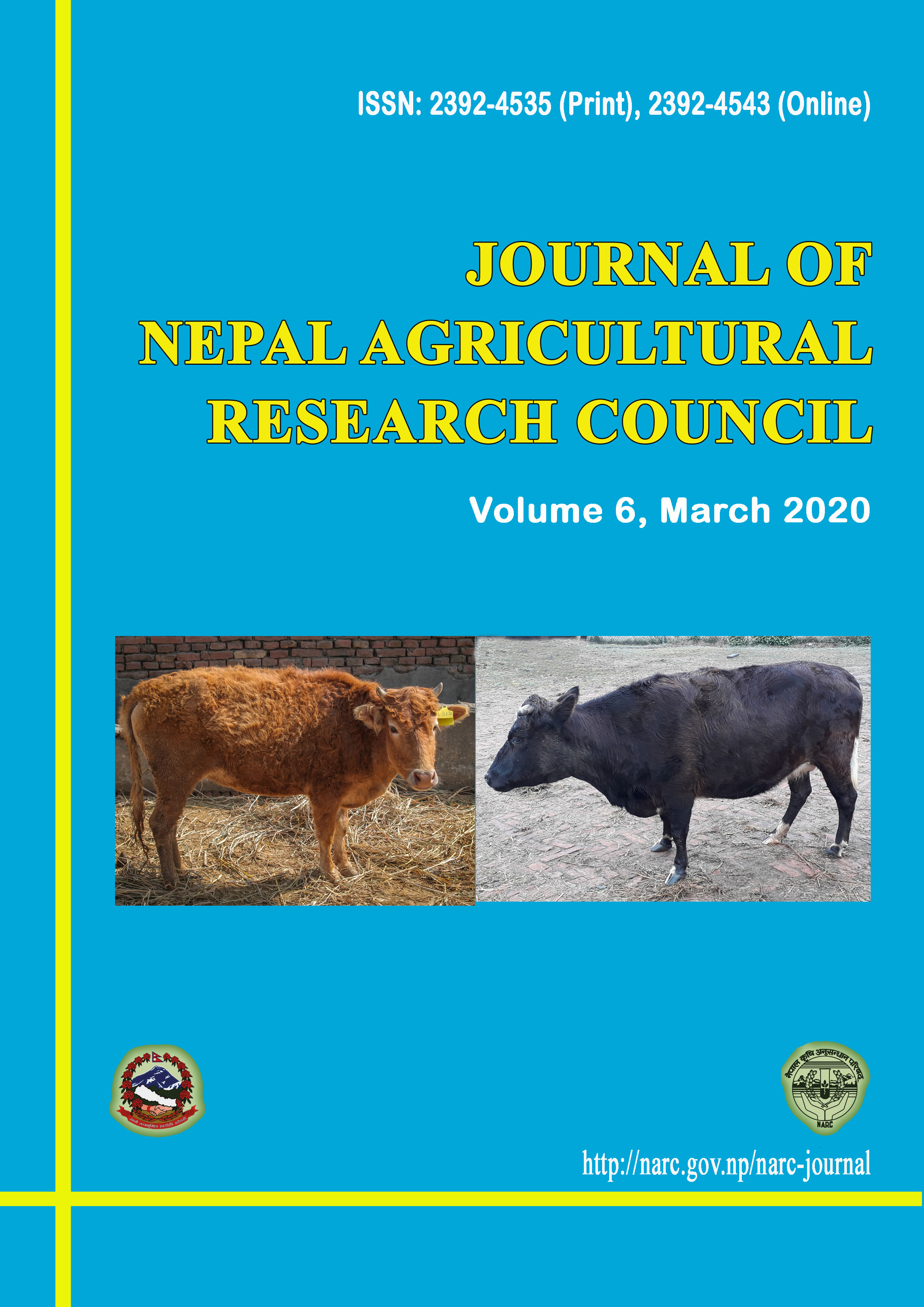Agro-morphological Diversity of High Altitude Bean Landraces in the Kailash Sacred Landscape of Nepal
DOI:
https://doi.org/10.3126/jnarc.v6i0.28109Keywords:
Common bean, Landrace, Diversity, Kailash Sacred Landscape, PhenotypeAbstract
Many varieties of bean are widely grown across diverse agro-ecological zones in Nepal. And opportunities exist for improving the crops and enhancing their resilience to various biotic and abiotic stressors. In this context, an experiment was conducted from June to October 2016 in Khar VDC of Darchula district to study the phenotypic traits of nine landraces of bean (Phaseolus vulgaris L.). The bean landraces were planted using randomized complete block design in three sites (Dhamidera, Dallekh and Sundamunda villages), with three replications in each site for their comparative analysis. The study considered the following phenotypic traits: days to emergence, days to 50% flowering, days to 90% pod maturity, number of nodes, pod length, pod width, number of pods, number of seeds per pod and weight and grain yield for 100 seeds. Kruskal-Wallis test showed significant differences in the landraces both within and among locations. KA-17-08-FB and KA-17-04-FB were late flowering (63 and 65 days respectively) compared to other landraces whereas KA-17-07-FB flowered earliest (within 42 days). In all three sites, three landraces namely KA-17-07-FB, KA-17-04-FB and KA-17-06-FB were found to be relatively more resistant to pest and diseases than other landraces. Eight out of nine landraces in Dhamidera and Dallekh villages and seven out of nine in Sundamunda village produced seeds greater than 1.0 t/ha. Among the nine varieties, KA-17-02-FB was the highest yielding variety, with an average yield of 3.8 t/ha. This study is useful for identifying suitable landraces for future promotion based on their maturity, grain yield, disease resistance and other qualitative and quantitative characteristics.




